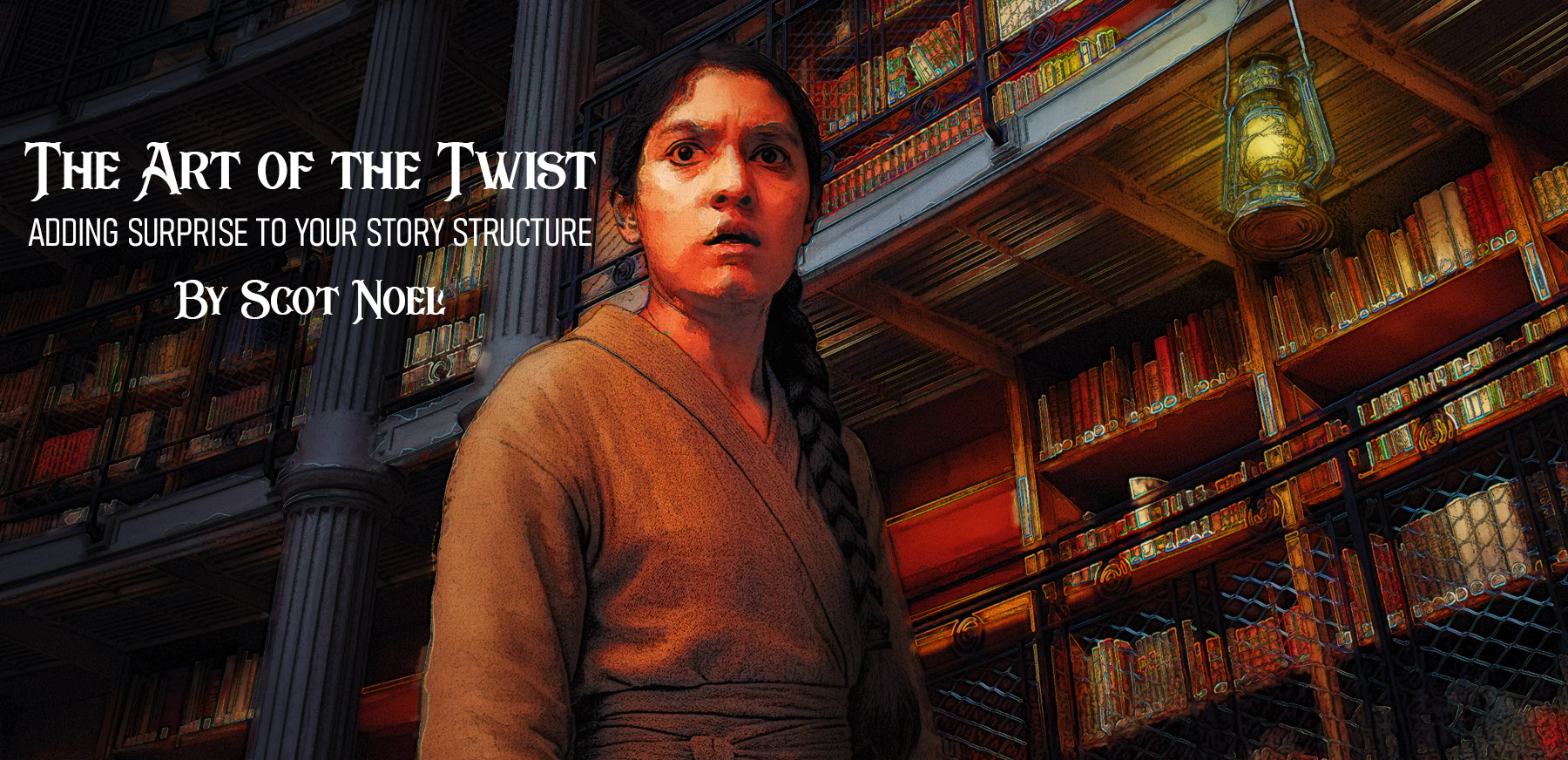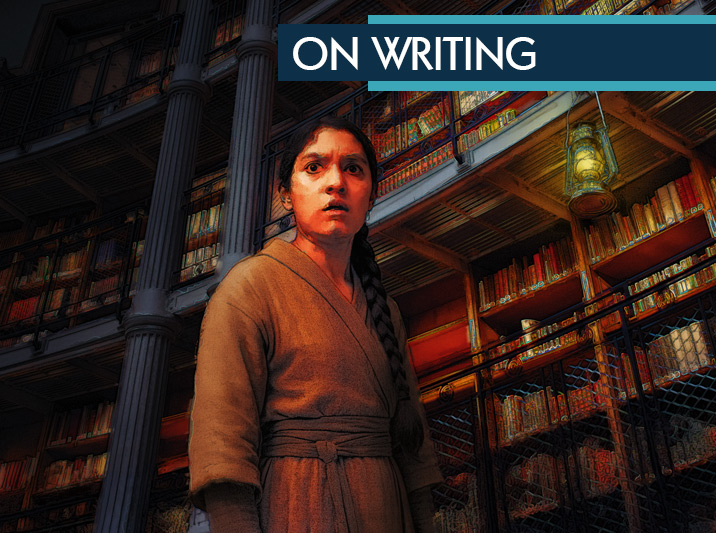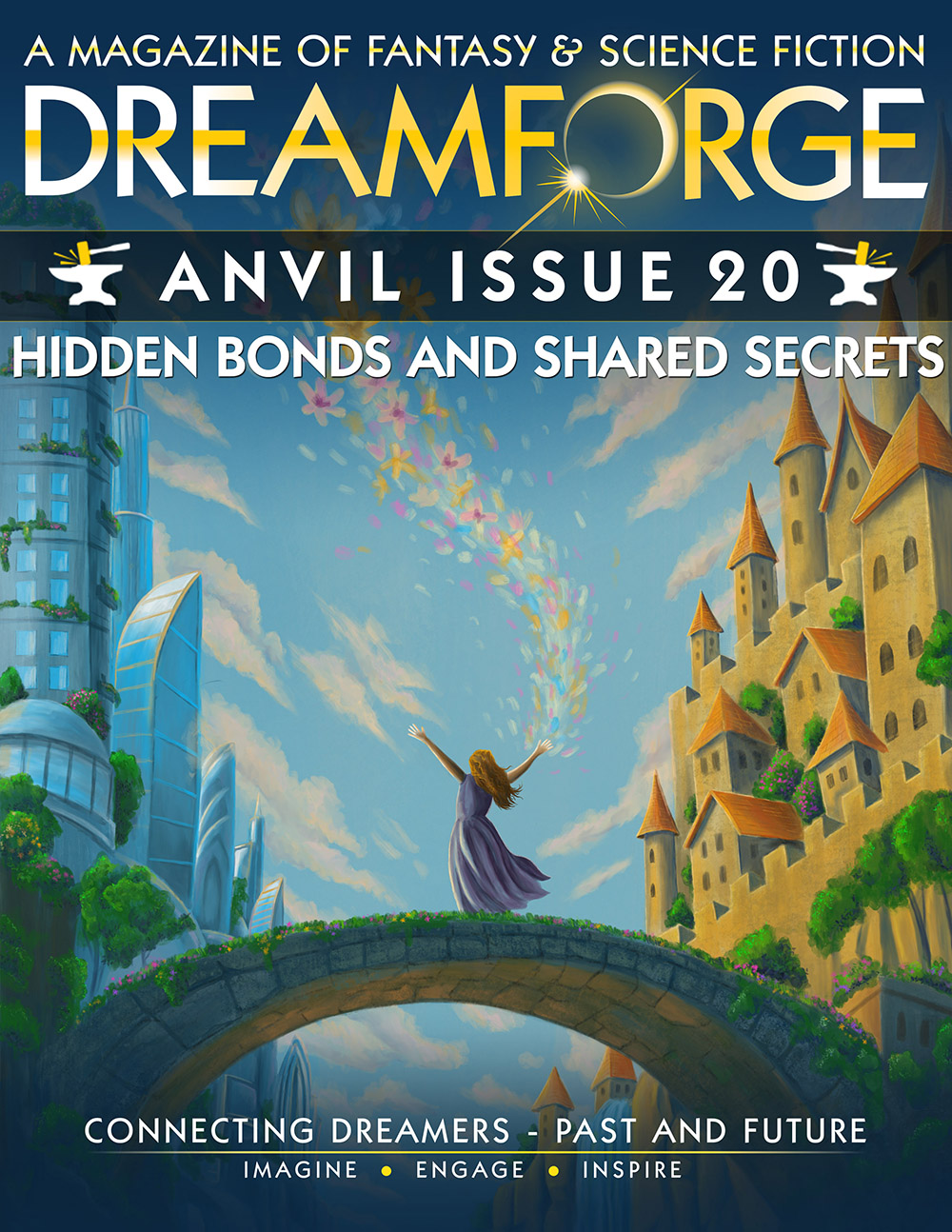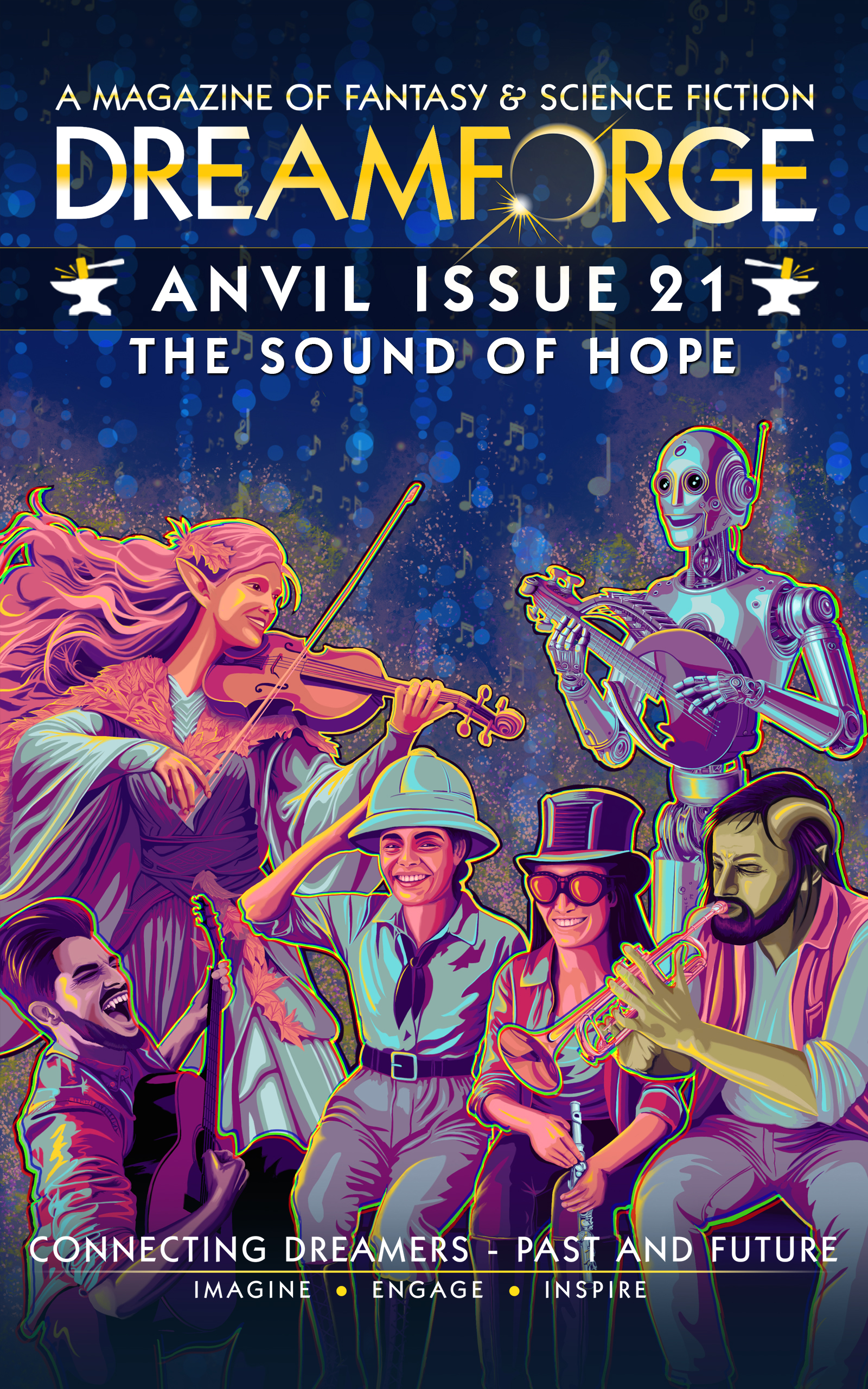 We’ve talked about how to craft a good opening, the try fail cycle in the middle, and the climactic ending of a story. But what separates a decent story from one that readers can’t stop thinking about? Often, it’s a well-executed twist that surprises the reader and sends the narrative in an unexpected direction. Let’s explore how to integrate a few wicked turns into our established story framework.
We’ve talked about how to craft a good opening, the try fail cycle in the middle, and the climactic ending of a story. But what separates a decent story from one that readers can’t stop thinking about? Often, it’s a well-executed twist that surprises the reader and sends the narrative in an unexpected direction. Let’s explore how to integrate a few wicked turns into our established story framework.
What Makes a Good Plot Twist?
A plot twist is a dramatic revelation that changes the reader’s understanding of what came before. The best twists feel both surprising and inevitable— something unexpected, yet consistent with everything that came before and soundly logical in context. (You might want to stretch first, this is a little more challenging than exercises we’ve done before.
Great plot twists have some common characteristics,
- They’re foreshadowed subtly – Clues exist, but they don’t jump out at the reader in a way that makes the coming change of direction obvious.
- They recontextualize earlier events – Making readers want to revisit the story. “Oh, now I understand. I need to read that again.”
- They raise emotional stakes – Making the protagonist’s journey more meaningful and even more difficult.
- They avoid being mere gimmicks – What is a ‘gimmick?’ You’ll know it when you read it. It feels ‘gimmicky.’ Make your plot twists serve character and theme, not just pop up as surprise a surprise for the reader. (i.e., it wouldn’t have meant much if Boba Fett was Luke’s father in Star Wars.)
When to Place Your Twists
The beauty of our story structure is that it offers natural opportunities for twists:
After Orientation – A an unexpected revelation about the protagonist’s character or situation (common in mysteries)
During Problem One in the Try/Fail Cycle – What appears to be an easy obstacle reveals unexpected complexity
During Problem Two – The apparent solution creates unforeseen challenges, moving the story in a heretofore unexpected direction
During Problem Three – This is a good one. The existential threat isn’t what the protagonist thought it was, but the real threat is obvious once you see it.
At the Climax – The final conflict resolves in an unpredictable yet satisfying way. (But not because the space cavalry arrives to save the day!)
In the Denouement – A final revelation that casts everything in new light (use sparingly. This requires a lot of skill to pull off and an article of its own to explain. Let’s start with the idea that a major twist at this point can feel like pulling the rug out from under the reder after they thought the story was settling.)
Types of Plot Twists
- The Identity Twist – Someone isn’t who they appear to be
- The Perception Twist – The situation isn’t what it seems
- The Betrayal Twist – A trusted ally works against the protagonist
- The Motive Twist – A character’s true intentions are revealed
- The Reality Twist – The nature of the world itself is different
- The Context Twist – The setting or time period isn’t what readers assumed
Integrating Twists Into Our Framework
Let’s imagine a story using our standard Plotting Game template with strategic twists integrated throughout:
Orientation
We meet Lyria, an apprentice lorekeeper in the Great Library of Eldrath. She’s cataloging ancient grimoires bequeathed by Magister Thorne, a legendary archmage who recently ascended to the Ethereal Plane after centuries of life. Lyria is meticulous, detail-oriented, and passionate about preserving magical knowledge.
Character Flaw
Lyria suffers from spell-fear. Despite her encyclopedic knowledge of magical theory, she can barely cast even minor enchantments without freezing up. This stems from a childhood accident where her wild magic hurt someone. She compensates through exhaustive research and theoretical mastery while avoiding practical spellcasting.
Threshold Event + TWIST #1 (Identity Twist)
While deciphering Thorne’s encoded journals, Lyria discovers evidence suggesting the archmage stole his most famous spell—the Soul Shield that protects their realm from the Void—from a forgotten hedge witch. This revelation threatens everything Lyria believes about magical ethics.
The twist: What appeared to be routine archival work becomes a mystery that challenges Lyria’s understanding of her realm’s greatest protector..
Narrative Hook
Lyria decides to investigate discreetly, worried about destabilizing realm politics without conclusive evidence. Her discovery could rewrite magical history or label her a heretic if she’s wrong.
Try/Fail Problem One
Lyria’s first obstacle involves accessing Thorne’s sealed workshop in the Forbidden Tower. She carefully navigates the library’s politics and gains limited access using her scholarly credentials. Inside, she finds more evidence suggesting spell theft and believes she’s confirmed her suspicions when she discovers correspondence with a village witch named Mara.
Try/Fail Problem Two + TWIST #2 (Perception Twist)
As Lyria follows magical traces to find Mara’s descendants, she discovers inconsistencies in the magical signatures that make the theft theory impossible. However, she uncovers something more disturbing – evidence that the Soul Shield spell isn’t actually protecting the realm but slowly draining it, feeding power to something beyond the Void Gate.
The twist: What appeared to be magical plagiarism might actually be something far darker—a spell designed to weaken rather than protect.
Lyria now faces a more complex moral dilemma. Should she expose a spell that might be secretly harmful but currently holds back immediate Void incursions, potentially leaving the realm defenseless?
Try/Fail Problem Three + TWIST #3 (Motive Twist)
As Lyria gets closer to the truth, magical disturbances erupt around her— her research notes transform into moths and scatter, phantasmal threats manifest in her dreams, and her quarters are invaded by shadow creatures. The stakes have escalated from academic to existential danger.
Forced to actively cast protective spells despite her fear, Lyria discovers she has unusual resistance to void magic. Through painful experimentation, she determines that the Soul Shield isn’t failing but evolving— Thorne didn’t steal the spell but modified it deliberately to slowly acclimate humans to void energy, preparing them for something coming.
The twist: The archmage wasn’t weakening the realm’s defenses but strengthening its people in a controversial, secretive way.
Climax + TWIST #4 (Reality Twist)
Lyria finally deciphers the final journal and performs a revealing ritual, only to discover that Magister Thorne hasn’t ascended at all—he sacrificed himself to become the living core of the Soul Shield. Moreover, “Mara” wasn’t a witch but a visitor from beyond the Void who showed Thorne that their realm exists within a cosmic cycle that is about to renew with potentially catastrophic consequences.
The twist: The entire reality that Lyria understood—the nature of magic, the Void, and their realm’s place in the cosmos—was fundamentally incomplete.
In a moment of crisis as the Shield begins its final transformation, Lyria must overcome her spell-fear and cast the most complex magic of her life— not to stop the process but to guide it, serving as a temporary anchor while Thorne’s consciousness completes the realm’s preparation.
Denouement
Lyria emerges changed, her spell-fear transformed into respectful caution. The realm experiences a controlled magical renewal rather than destruction, with citizens developing new magical aptitudes. The Great Library recontextualizes Thorne not as a spell thief or conventional hero, but as someone who made an eternal sacrifice. Lyria takes up a new role as liaison between traditional magic practitioners and those exploring the previously forbidden void arts, her unique perspective bridging ancient knowledge with cosmic truth.
Avoiding Common Twist Pitfalls
- Don’t cheat the reader – Twists should be surprising but fair, based on information that was available and that they should recognize from memory.
- Maintain character consistency – People may have hidden motives but shouldn’t suddenly act out of character
- Don’t twist for twist’s sake – Each revelation should deepen the story, not just shock
- Beware of twist dilution – Too many surprises can diminish their impact
- Respect genre expectations – Know when readers want resolution versus ongoing mystery
Final Thoughts
The best plot twists transform a story from entertaining to unforgettable by forcing readers to reconsider everything they thought they knew. When integrated into our story framework, twists can elevate the section in which they appear, from orientation to denouement.
Plot twists aren’t extra decorations but powerful tools that intensify the reading experience. They turn good stories into more engaging ones by creating those moments readers can’t wait to discuss with friends: “Did you see that coming? I never expected that!”
Now it’s your turn. Take your next story outline and ask yourself: Where could a well-placed twist transform a reader’s understanding? What assumptions might your protagonist – and your readers – have wrong? The answer might just be the key to creating your most memorable story yet.












